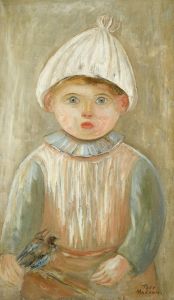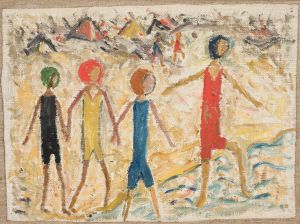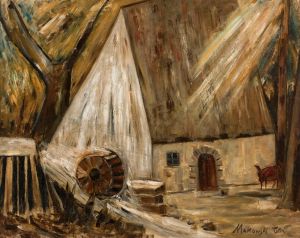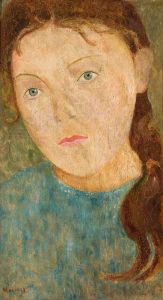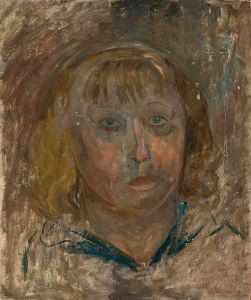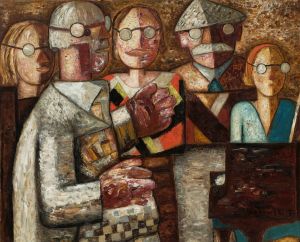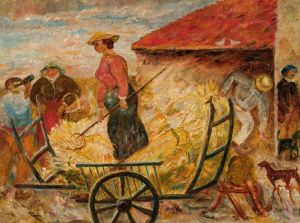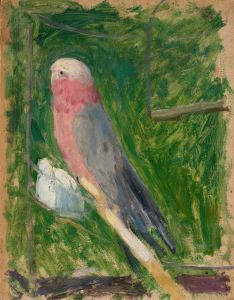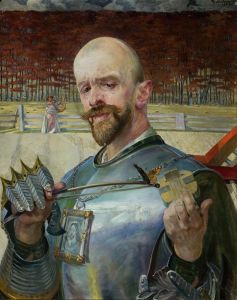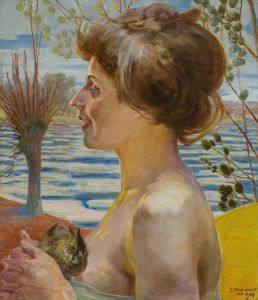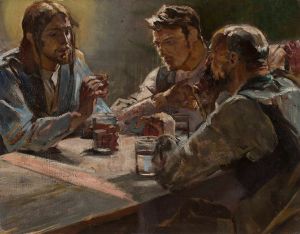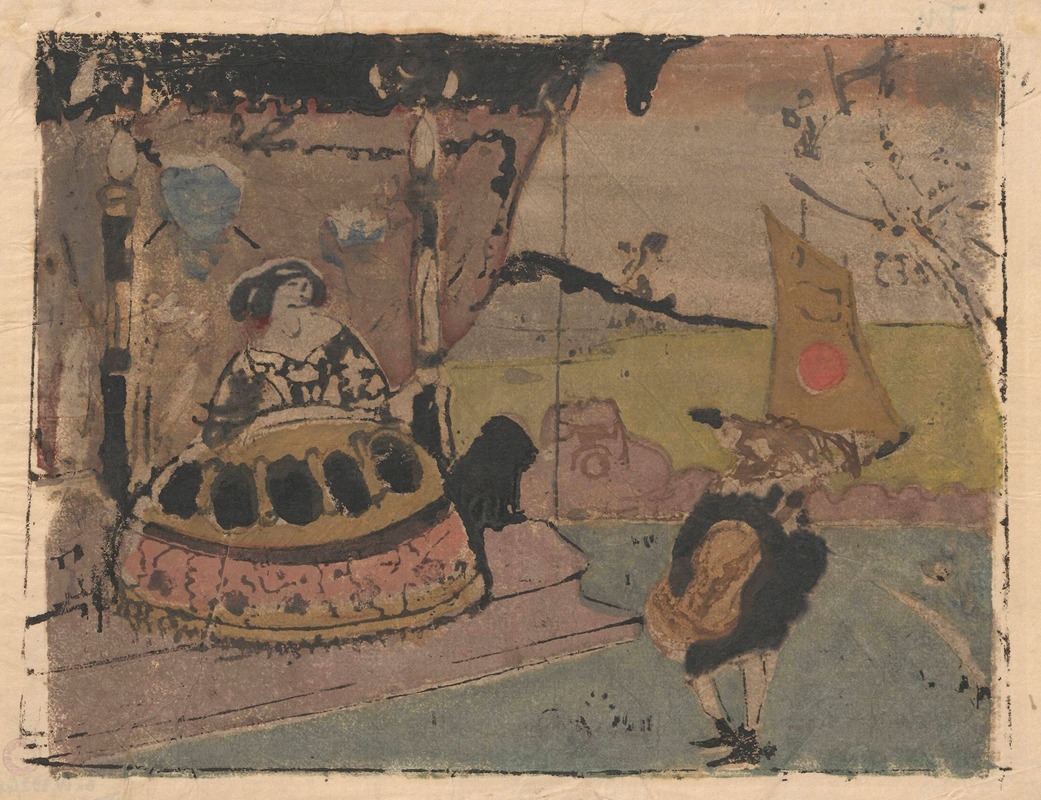
Serenade
A hand-painted replica of Tadeusz Makowski’s masterpiece Serenade, meticulously crafted by professional artists to capture the true essence of the original. Each piece is created with museum-quality canvas and rare mineral pigments, carefully painted by experienced artists with delicate brushstrokes and rich, layered colors to perfectly recreate the texture of the original artwork. Unlike machine-printed reproductions, this hand-painted version brings the painting to life, infused with the artist’s emotions and skill in every stroke. Whether for personal collection or home decoration, it instantly elevates the artistic atmosphere of any space.
Tadeusz Makowski was a Polish painter known for his unique style that combined elements of folk art, symbolism, and modernism. Born on January 29, 1882, in Oświęcim, Poland, Makowski initially studied classical philology at the Jagiellonian University in Kraków before pursuing his passion for art at the Academy of Fine Arts in Kraków. He was a student of Józef Mehoffer and Jan Stanisławski, two prominent figures in Polish art. Makowski's early works were influenced by the Young Poland movement, which emphasized a return to nature and national identity.
In 1908, Makowski moved to Paris, where he became part of the vibrant artistic community. The city was a hub for avant-garde movements, and Makowski was exposed to various styles and techniques. His work during this period was influenced by the likes of Paul Cézanne and the Cubists, although he developed a distinctive style that set him apart from his contemporaries. Makowski's paintings often featured simplified forms and a muted color palette, reflecting his interest in the innocence and simplicity of childhood.
"Serenade" is one of Makowski's notable works, although specific details about the painting, such as its creation date and current location, are not widely documented. The painting exemplifies Makowski's characteristic style, which often includes figures with childlike features and a dreamlike quality. His works frequently depict scenes of everyday life, imbued with a sense of nostalgia and whimsy.
Makowski's art is characterized by its use of geometric shapes and a limited color range, which contribute to the overall harmony and balance of his compositions. He often portrayed children and rural scenes, drawing inspiration from Polish folklore and traditions. This focus on childhood and simplicity can be seen as a response to the complexities and rapid changes of the modern world.
Throughout his career, Makowski exhibited his works in various galleries and salons, gaining recognition in both France and Poland. Despite living in France for much of his life, he maintained strong ties to his Polish heritage, which is evident in the themes and motifs present in his art. Makowski's work is celebrated for its unique blend of modernist techniques and traditional subject matter, making him an important figure in the history of Polish art.
Tadeusz Makowski passed away on November 1, 1932, in Paris. His legacy continues to be appreciated by art enthusiasts and scholars, and his works are held in various collections, including the National Museum in Warsaw and the Musée National d'Art Moderne in Paris. "Serenade," like many of his paintings, captures the essence of Makowski's artistic vision, combining simplicity with depth and evoking a sense of wonder and nostalgia.






